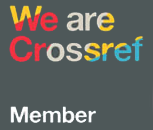The Bulletin of the Institute of Economics of the Russian Academy of Sciences № 1/2023. Issues of Economic theory.
Vinokurov Stepan S.
Cand. Sci. (Econ.), associate professor, Department of general economics and history of economic thought, Saint Petersburg State University of Economics (UNECON), Saint Petersburg, Russia
BEHAVIORAL “ANOMALIES” AND THE COST OF DECISION-MAKING
 40-57 40-57 |
 403.04 KB 403.04 KB |
Open .pdf |
Abstract
The author explores the possibility of generalizing the main results of behavioral economics (importance of the status-quo and notions of justice for decision-making, endowment effect, transactional utility, mental accounting, dynamic inconsistency and the lack of self-control, social preferences) based on the assumption of costly choices and the ability to refuse choice and maintain the status-quo, using the formalization of the rational inattention concept. The author shows that costly choices may explain why behavioral biases remain within economic logic, even in the case of a utility-maximizing individual. Some remarks on economic policy are made as a result.
Keywords: bounded rationality, behavioral economics, nudging, rational inattention.
JEL: D01, D11, D83, D9.
EDN: GMIPQL
DOI: https://doi.org/10.52180/2073-6487_2023_1_40_57
References
- Danilov V.I. Beyond Classical Rationality: Two-Stage Rationalization // Journal of the New Economic Association. 2015. No. 2. Pp. 12–35. (In Russ.).
- Shastitko A. Behavioral Antitrust // Economic Policy. 2014. No. 6. Pp. 76-91. (In Russ.).
- Bhargava S., Loewenstein G. Behavioral economics and public policy 102 // Beyond nudging. American Economic Review. 2015. Vol. 105. No. 5. Pp. 396–401. DOI: 10.1257/aer.p20151049.
- Bordalo P., Gennaioli N., Shleifer A. Salience theory of choice under risk // The Quarterly journal of economics. 2012. Vol. 127. No. 3. Pp. 1243–1285. DOI: 10.1093/qje/qjs018.
- Bordalo P., Gennaioli N., Shleifer A. Salience in experimental tests of the endowment effect // American Economic Review. 2012. Vol. 102. No. 3. Pp. 47–52. DOI: 10.1257/aer.102.3.47.
- Camerer C., Issacharoff S., Loewenstein G., O’Donoghue T., Rabin M. Regulation for Conservatives: Behavioral Economics and the Case for “Asymmetric Paternalism” // University of Pennsylvania law review. 2003. Vol. 151. No. 3. Pp. 1211–1254. DOI: 10.2307/3312889.
- Farhi E., Gabaix X. Optimal taxation with behavioral agents // American Economic Review. 2020. Vol. 110. No. 1. Pp. 298–336. DOI: 10.1257/aer.20151079.
- Fehr E., Rangel A. Neuroeconomic Foundations of Economic Choice – Recent Advances // Journal of Economic Perspectives. 2011. Vol. 25. No. 4. Pp. 3–30. DOI: 10.1257/jep.25.4.3.
- Gerasimou G. Asymmetric dominance, deferral, and status quo bias in a behavioral model of choice // Theory and Decision. 2016. Vol. 80. No. 2. Pp. 295–312. DOI: 10.1007/s11238-015-9499-7.
- Gigerenzer G. On the supposed evidence for libertarian paternalism // Review of philosophy and psychology. 2015. Vol. 6. No. 3. Pp. 361–383. DOI 10.1007/s13164-015-0248-1.
- Hausman D. M., Welch B. Debate: To nudge or not to nudge // Journal of Political Philosophy. 2010. Vol. 18. No. 1. Pp. 123–136. DOI: 10.1111/j.1467-9760.2009.00351.x.
- Hébert B., Woodford M. Rational inattention and sequential information sampling. National Bureau of Economic Research. 2017. No. w23787. DOI: 10.3386/w23787.
- Maćkowiak B., Matějka F., Wiederholt M. Dynamic rational inattention: Analytical results // Journal of Economic Theory. 2018. Vol. 176. Pp. 650–692. DOI: 10.1016/j.jet.2018.05.001.
- Matějka F., McKay A. Rational inattention to discrete choices: A new foundation for the multinomial logit model // American Economic Review. 2015. Vol. 105. No. 1. Pp. 272–298. DOI: 10.1257/aer.20130047.
- Mitchell G. Libertarian paternalism is an oxymoron // Northwestern University Law Review. 2004. Vol. 99. No. 3. Pp. 1245–1259.
- Sims C. Implications of rational inattention // Journal of monetary Economics. 2003. Vol. 50. No. 3. Pp. 665-690. DOI: 10.1016/S0304-3932(03)00029-1.
- Sims C. Rational inattention: Beyond the linear-quadratic case // American Economic Review. 2006. Vol. 96. No. 2. Pp. 158–163. DOI: 10.1257/000282806777212431.
- Steiner J., Stewart C., Matějka F. Rational Inattention Dynamics: Inertia and Delay in Decision-Making // Econometrica. 2017. Vol. 85. No. 2. Pp. 521–553. DOI: 10.3982/ECTA13636.
- Thaler R. Misbehaving: The Making of Behavioral Economics. WW Norton & Company, 2015.
- Thaler R., Sunstein C. Libertarian paternalism // American economic review. 2003. Vol. 93. No. 2. Pp. 175-179. DOI: 10.1257/000282803321947001.
- Thaler R., Sunstein C. Nudge: Improving Decisions about Health, Wealth, and Happiness. Yale University Press, 2008.
- Woodford M. Stochastic choice: An optimizing neuroeconomic model // American Economic Review. 2014. Vol. 104. No. 5. Pp. 495 –500. DOI: 10.1257/aer.104.5.495.
Manuscript submission date: 05.12.2022
For citation:
Vinokurov S.S. Behavioral «anomalies» and the cost of decision-making // Vestnik Instituta Ekonomiki Rossiyskoy Akademii Nauk. 2023. №. 1 Pp. 40-57. DOI: https://doi.org/10.52180/2073-6487_2023_1_40_57 EDN: GMIPQL








